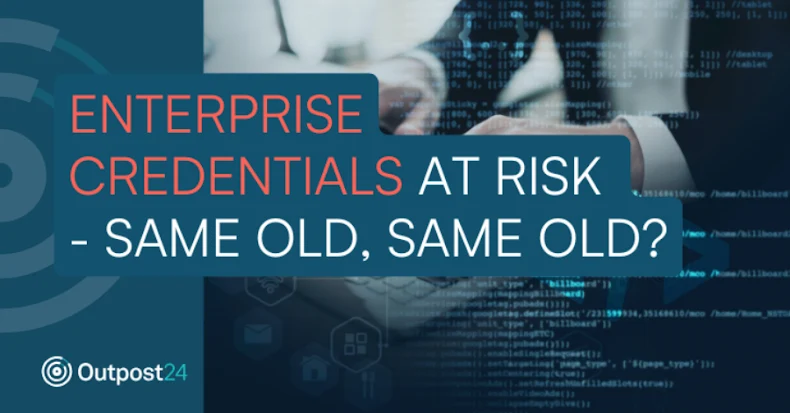Imagine this: Sarah from accounting gets what looks like a routine password reset email from your organization’s cloud provider. She clicks the link, types in her credentials, and goes back to her spreadsheet. But unknown to her, she’s just made a big mistake. Sarah just accidentally handed over her login details to cybercriminals who are laughing all the way to their dark web marketplace, where they’ll sell her credentials for about $15. Not much as a one-off, but a serious money-making operation when scaled up.
The credential compromise lifecycle
- Users create credentials: With dozens of standalone business apps (each with its own login) your employees must create numerous accounts. But keeping track of multiple unique usernames/passwords is a pain, so they reuse passwords or make tiny variations.
- Hackers compromise credentials: Attackers snag these credentials through phishing, brute force attacks, third-party breaches, or exposed API keys. And many times, nobody even notices that it’s happened.
- Hackers aggregate and monetize credentials: Criminal networks dump stolen credentials into massive databases, then sell them on underground markets. Hackers sell your company’s login details to the highest bidder.
- Hackers distribute and weaponize credentials: Buyers spread these credentials across criminal networks. Bots test them against every business app they can find, while human operators cherry-pick the most valuable targets.
- Hackers actively exploit credentials: Successful logins let attackers dig in, escalate privileges, and start their real work — data theft, ransomware, or whatever pays best. By the time you notice weird login patterns or unusual network activity, they could have already been inside for days, weeks, or even longer.
Common compromise vectors
Criminals have no shortage of ways to get their hands on your company’s user credentials:
- Phishing campaigns: Attackers craft fake emails that look legit — complete with stolen company logos and convincing copy. Even your most security-conscious employees can be fooled by these sophisticated scams.
- Credential stuffing: Attackers grab passwords from old breaches, then test them everywhere. A 0.1% hacking success rate may sound tiny, but with rampant password reuse and the fact that hackers are testing millions of credentials per hour, it quickly adds up.
- Third-party breaches: When LinkedIn gets hacked, attackers don’t just target LinkedIn users — they test those same credentials against all kinds of other business apps. Your company may have the most robust security in the world, but you’re still vulnerable if users are reusing credentials.
- Leaked API keys: Developers accidentally publish credentials in GitHub repos, config files, and documentation. Automated bots scan for these 24/7, scooping them up within minutes.
The criminal ecosystem
Just like a car theft ring has different players — from the street-level thieves grabbing cars to the chop shop operators and overseas exporters — the credential theft ecosystem has bad actors who want different things from your stolen credentials. But knowing their game can help you better defend your organization.
Opportunistic fraudsters want quick cash. They’ll drain bank accounts, make fraudulent purchases, or steal crypto. They aren’t picky – if your business credentials work on consumer sites, they’ll use them.
Automated botnets are credential-testing machines that never sleep. They throw millions of username/password combos at thousands of websites, looking for anything that sticks. The name of their game is volume, not precision.
Then criminal marketplaces act as middlemen who buy stolen credentials in bulk and resell them to end users. Think of them as the eBay of cybercrime, with search functions that let buyers easily hunt for your organization’s data.
Organized crime groups treat your credentials like strategic weapons. They’ll sit on access for months, mapping your network and planning big-ticket attacks like ransomware or IP theft. These are the kind of professionals who turn single credential compromises into million-dollar disasters.
Real-world impact
Once attackers get their hands on a set of working credentials, the damage starts fast and spreads everywhere:
- Account takeover: Hackers waltz right past your security controls with legitimate access. They’re reading emails, grabbing customer data, and sending messages that look like they’re coming from your employees.
- Lateral movement: One compromised account quickly becomes ten, then fifty. Attackers hop through your network, escalating privileges and mapping out your most valuable systems.
- Data theft: Attackers focus on identifying your crown jewels — customer databases, financial records, trade secrets — and siphoning them off through channels that appear normal to your monitoring tools.
- Resource abuse: Your cloud bill explodes as attackers spin up crypto mining operations, send spam through your email systems, or burn through API quotas for their own projects.
- Ransomware deployment: If hackers are looking for a major payout, they often turn to ransomware. They encrypt everything important and demand payment, knowing you’ll likely pay because restoration from backups takes forever — and is far from a cheap process.
But that’s just the beginning. You could also be looking at regulatory fines, lawsuits, massive remediation costs, and a reputation that takes years to rebuild. In fact, many organizations never fully recover from a major credential compromise incident.
Take action now
The reality is that some of your company’s user credentials are likely already compromised. And the longer the exposed credentials sit out undetected, the bigger the target on your back.
Make it a priority to find your compromised credentials before the criminals use them. For example, Outpost24’s Credential Checker is a free tool that shows you how often your company’s email domain appears in leak repositories, observed channels or underground marketplaces. This no-cost, no-registration check doesn’t display or save individual compromised credentials; it simply makes you aware of your level of risk. Check your domain for leaked credentials now.
Source: thehackernews.com…

